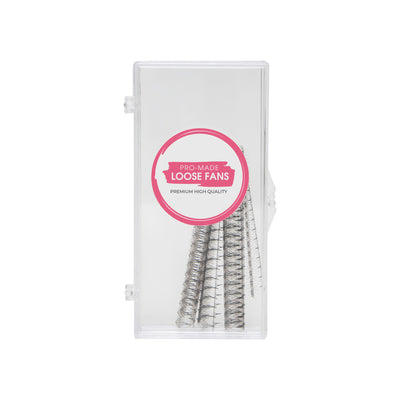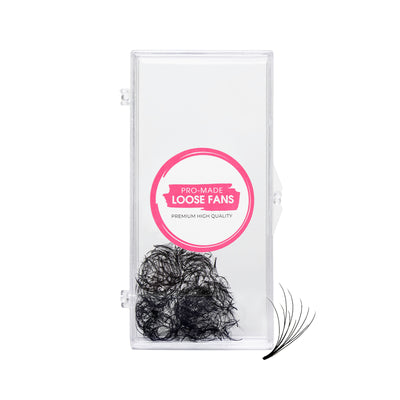A complete guide to lash extension sizes
Lash extensions are a way to achieve mesmerizing long eyelashes by attaching pre-styled individual fibers onto natural lashes. They’re designed to enhance a person’s unique look, attracting attention to the windows of the soul – all the while lending a spark of panache and flair to their signature beauty!
It’s the task of lash artists to create miracles, and this entails an intimate knowledge of the various properties of fans and classic extensions that can be applied to a client’s eyelashes. Having a vast range of material types (animal vs. synthetic) and styles (including the types of curls and the options for distributing fans across the eyelid) are essential – as is a fundamental understanding of length and diameter.
See more Lash extensions choosing tips
Properly choosing the appropriate size of lash extensions when working on a client’s look is more important than you might think. Getting it wrong can be a serious setback for the customer – and it can even cause permanent damage! The central issue is the way a lash extension’s size and length (as well as the total volume of any particular style of fan) puts weight on each of the client’s natural eyelashes. Too heavy, and the extension will put too much pressure on the base lash, weakening it over time and potentially causing it to break. This can actually cause permanent harm to the lashes, resulting in a thinner or shorter lash growth in the future. Not exactly the desired outcome for someone looking for a glow up!
Choosing the right weight
The weight of a classic eyelash extension or a fan that contains a number of lashes is determined by the diameter of the fibre. It should be clearly marked on the sets of premade fans/handmade fans or classic/conventional lashes you’re using. The weight you select for your client will depend on the condition of their own eyelashes.
Many clients will present with thin natural lashes, which can be the case with older clients (usually above 50). An experienced lash artist will be able to determine whether a client’s natural lashes are thin or otherwise by simple observation). In the industry, we describe clients with the average lash condition as having healthy natural lashes, while those with particularly broad, thick eyelashes are said to have strong natural lashes.
In general, clients with thin natural lashes are suitable to wear classic extensions that are 0.10 mm in diameter; those with healthy natural lashes can wear classic extensions of 0.15 mm in diameter; and those with strong natural lashes can wear 0.20 mm-diameter classic extensions.

The weight of volume lashes (fans of thinner fibers) are not exactly equivalent to the sum of their individual strands when compared to classic (single-strand) extensions. For example, a fan of two 0.05 mm fibers does not exert the same weight on the eyelash as a single 0.10 mm strand. Thin lashes that can support a 0.10 mm classic extension, for example, can bear a 2D fan of 0.07 mm lashes.
The following chart is a summary of weight ratios to lash bases:

Choosing the right length
The first rule in selecting the right lash length for a client is to ensure that the extension is no more than 2–3 mm longer than the client’s natural eyelashes. If you try to double the length of your client’s eyelashes, the result will put so much strain on their eyelids that it will possibly have a negative impact on regrowth after the lash falls.
Beyond that rule of thumb, it’s important to select different lengths to match different sections of the eye line. While the average length of extensions used across the eyelash should be around 9–13 mm. When it comes to the inner eye corners then slightly shorter extensions of 5-9 mm should be applied to achieve a comfortable balance that will not heavily impact the natural eyelash health. Of course, some hybrid volume handmade fans can balance longer extensions from 14 mm within a set of shorter lengths.

Finally, you should also consider the overall look of the extension against the client’s natural eyes. If the eyes are slightly hooded or droopy, then slightly longer lashes will achieve a brighter lift and better augment their natural beauty. If you’re using lashes with a more dramatic curl, remember too that they will appear shorter, and so choosing slightly longer lash lengths will compensate for that problem.
Select the right size, and your client’s lash extensions will definitely be a hit that won’t put too much strain on their natural eyelashes!




















Leave a comment